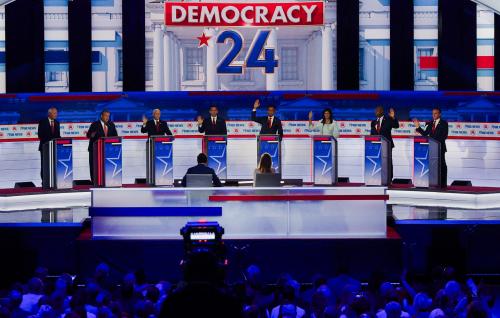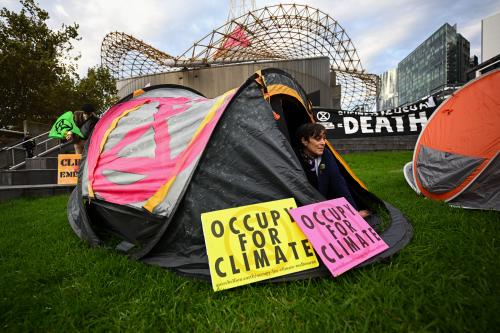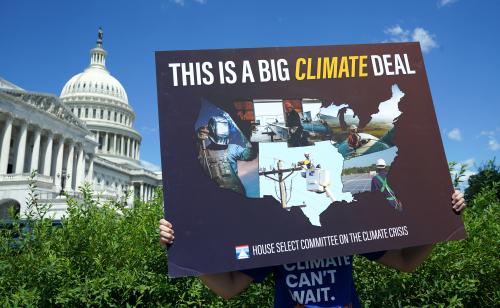It is gradually dawning on Washington that cap-and-trade legislation won’t pass anytime soon–certainly not this year, and probably not next year either. One reason is public opinion: a Gallup survey released last week revealed that “for the first time in Gallup’s 25-year history of asking Americans about the trade-off between environmental protection and economic growth, a majority of Americans say economic growth should be given the priority, even if the environment suffers to some extent.” Just four years ago, protecting the environment enjoyed a 17-point edge; today, the advantage goes to the economy, 51-42.
The second reason is regional politics. Support for environmental legislation is strongest on the coasts, weakest in the interior areas that depend more heavily on coal-fired power plants. The Midwest, which has already been hit hard by the collapse of manufacturing, would take a second blow. This matters because the Democratic Party is an uneasy coalition between the coasts and the interior, symbolized by bitter fight between Henry Waxman and John Dingell for the chairmanship of the House Energy and Commerce Committee. It is hard to imagine Midwestern Democrats voting for cap-and-trade in current economic circumstances, and perhaps not in any economic circumstances–that is, unless they receive credible assurances of dollar-for-dollar offsets against the higher costs their constituents would have to bear.
This reality creates two difficulties for the Obama administration. On the fiscal front, the administration is counting on $629 billion in revenues from cap-and-trade to pay for the Making Work Pay tax credit and its proposed spending on clear energy technology. Failure to pass cap-and-trade would force the administration to choose between cherished programs and an even higher budget deficit, already estimated by the CBO at $9.3 trillion over the next decade. On the diplomatic front, when the Copenhagen Climate Conference convenes this December, the administration faces the prospect of showing up empty-handed. Senior officials acknowledge the potential embarrassment for a president so clearly determined to assert American global leadership on energy and environmental issues but see no easy way out.
In the face of these inconvenient developments, the administration’s options are limited. If the president remains committed to Making Work Pay and clean energy investment, he will probably have to agree to equivalent spending reductions elsewhere, because fiscal moderates within his own party will insist. Internationally, the president’s team would be wise to prepare other key participants in the Copenhagen conference for the near-certainty that the stance of the United States on emissions reductions will be based mostly on good intentions rather than settled policy. The administration, quite simply, won’t be close to meeting its own standards of success on environmental issues–and it is hard to erect credibility on a foundation of overpromising and underperforming.



Commentary
Op-edA Cap And Trade Calamity?
March 23, 2009